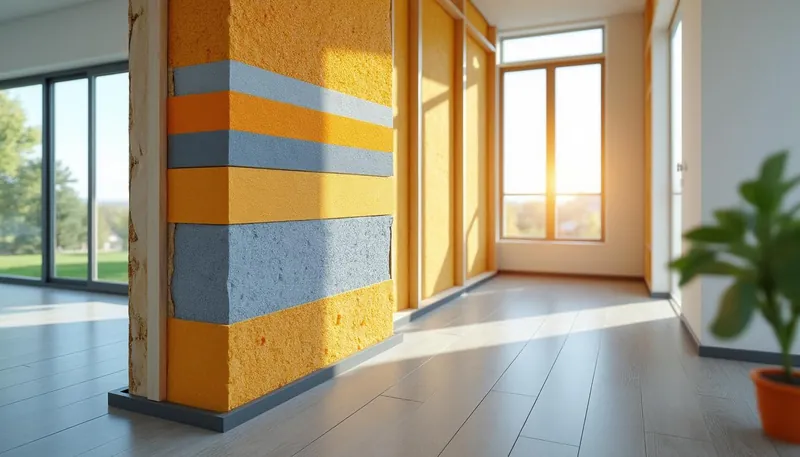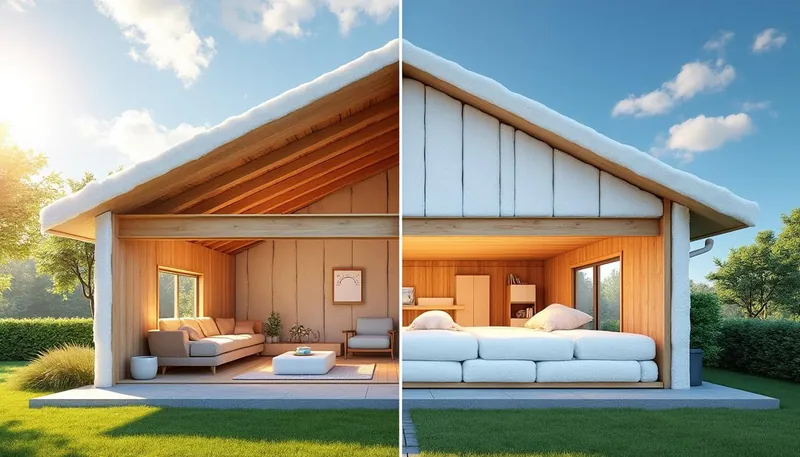Homeowners seeking strategies to reduce their energy bills often consider upgrading their insulation. Among the various insulation options available, foam insulation stands out due to its superior energy-saving capabilities and unparalleled efficiency. With the potential to cut energy use by 30-40%, foam insulation not only promises significant savings but also provides comfort and longevity. As energy costs continue to rise, the financial and environmental benefits of investing in foam insulation are clearer than ever. Here, we delve into the specifics of how quickly foam insulation can pay for itself through energy savings, shedding light on its advantages, the types available, costs, and factors influencing payback periods. The talk of how great savings stacks up makes this subject vital for many homeowners looking to make informed decisions about their investments.
In Brief:
- Foam insulation can save 30-40% on energy costs. 😮
- Payback period typically ranges from 2 to 7 years. 🔄
- Improved HVAC efficiency and lifespan due to effective sealing. 💻
- Options include open-cell and closed-cell foam. 🏠
- Potential rebates and incentives for energy upgrades. 💰
Understanding Foam Insulation and Its Benefits
Foam insulation, often referred to as Spray Polyurethane Foam (SPF), represents a game-changer in insulation technology. Unlike traditional insulation materials, SPF is a premium product that creates a continuous, air-tight barrier that minimizes energy loss. By effectively sealing tiny gaps and cracks in homes, it drastically reduces the amount of air infiltration, which is responsible for about 40% of energy loss in a typical residence.
Types of Foam Insulation: There are two main types of foam insulation you need to know about:
- Open-Cell Foam: This low-density foam (0.5 lb) is semi-rigid and suitable for soundproofing and insulating walls and attics. It expands dramatically, filling gaps, and has an R-value of 3.9 per inch. 💡
- Closed-Cell Foam: A high-density option (2 lb) that provides superior insulation with an R-value of 6.8 per inch. Closed-cell foam is ideal for areas where space is limited, such as basements and crawlspaces. 🧱
The Cost of Foam Insulation
When contemplating insulation options, costs are a crucial factor. Spray foam insulation is considerably more expensive than traditional insulation materials, costing roughly 2-3 times more. For residential projects, average costs can range from $3,000 to $5,000 for an attic and $1,800 to $2,500 for a crawlspace. New construction projects may expect to spend between $10,000 and $15,000 to insulate fully.
Investment Justification: Although the initial expenditure for foam insulation may seem daunting, it’s essential to look beyond the upfront costs:
- Reduced size of the HVAC system, leading to lower equipment costs. ⚙️
- Extended HVAC lifespan due to less operating strain. ⏳
- Eliminates the need for attic ventilation systems, saving even more. 💨

How Quickly Does Foam Insulation Pay for Itself?
The big question remains: how long before foam insulation pays for itself? Generally, the payback period averages between 2 to 7 years, with many homeowners experiencing significant savings on their monthly utility bills within this time frame. Those in regions with high energy costs or extreme climate conditions may find their payback period on the lower end of this spectrum.
Example of Cost Savings: Consider a household with heating and cooling expenses of $250 per month during peak usage. After installing closed-cell foam insulation, energy consumption can decrease by approximately 35%, leading to a new average monthly bill of around $165. This results in annual savings exceeding $1,000, clearly demonstrating how quickly the investment pays for itself.
| Region | Typical Monthly Bill Pre-Insulation | Estimated Monthly Bill Post-Insulation | Annual Savings |
|---|---|---|---|
| Cold Climate | $250 | $165 | $1,020 |
| Moderate Climate | $200 | $140 | $720 |
| Hot Climate | $220 | $150 | $840 |
Factors Influencing Payback Period
Several factors impact how quickly foam insulation will pay for itself:
- Energy Rates: Regions with higher energy costs will experience quicker payback. 📈
- Home Size: Larger homes generally yield greater energy savings. 🏠
- Current Insulation Level: Homes with inadequate or older insulation see faster returns. 🔄
- Condition of HVAC Systems: Older units may benefit more from the modern efficiency of foam insulation. ⚙️
The Advantages Beyond Financial Savings
Investing in foam insulation also brings numerous non-financial benefits that can enhance your living conditions. For instance, this type of insulation plays a crucial role in enhancing indoor air quality by reducing moisture and inhibiting mold growth. Homeowners can enjoy a cleaner, healthier living space, which is particularly vital for families with allergies or respiratory conditions.
Improved Comfort: Beyond energy and financial savings, foam insulation guarantees consistent indoor temperatures throughout the year:
- Stable temperatures keep your home comfortable regardless of external weather conditions. 🌤️
- Eliminates cold drafts and hot spots usually experienced with traditional insulation. 🌬️
| Benefit | Description |
|---|---|
| Energy Efficiency | Reduces energy waste by sealing air leaks effectively. |
| Mold Reduction | Limits the moisture accumulation that fosters mold growth. |
| Improved Air Quality | Enhances indoor air quality by preventing pollution entry. |
| Noise Reduction | Open-cell foam can act as a sound barrier. |
Financing Options and Incentives for Foam Insulation
Many homeowners may feel hesitant to invest in foam insulation due to the initial costs. However, various financing options and incentives can help ease the financial burden. Numerous programs exist to provide rebates and tax credits for energy-efficient upgrades, making this upgrade not just environmentally friendly but also more affordable.
Potential opportunities include:
- Rebates from local utility companies for energy-efficient improvements. 💵
- Tax credits for those who install foam insulation, reducing overall costs. 📝
- Low-interest loans specifically tailored for home energy upgrades. 🏦
How long does it take for spray foam insulation to pay off?
The typical payback period for spray foam insulation falls between 2 to 7 years, depending on various factors such as location and existing insulation.
Is spray foam insulation worth the investment?
Yes! Spray foam insulation offers substantial energy savings, improved indoor air quality, and extended HVAC lifespan, making it a valuable long-term investment.
Can I install foam insulation myself?
While some homeowners may attempt DIY installation, it’s highly recommended to hire professionals to ensure correct application, safety, and optimal performance.
What size HVAC system do I need after installing foam insulation?
Installing foam insulation often allows for a smaller HVAC system since heat loss is minimized, leading to cost savings in equipment.
What are the differences between open-cell and closed-cell foam?
Open-cell foam is light and sound-absorbing, while closed-cell foam is dense and water-resistant, offering different advantages depending on application.

